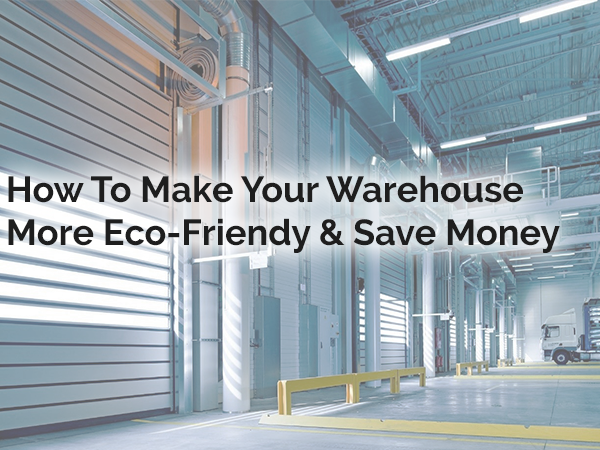These days, almost everybody wants to be more eco-friendly in their business practices, but many people think doing their bit for the environment will have a detrimental impact on their bottom line. Kelly Friel, from equipment and tools specialist Zoro, is here to explain why that doesn’t have to be the case.
Busy warehouses can be big polluters and, when you’re worried about keeping your business profitable, it can seem like environmental concerns are the least of your worries. But you might be surprised to learn that becoming more eco-friendly doesn’t just benefit the environment — it can also have huge knock-on effects to the rest of your business. Not only do you get to boast about your green credentials, you’ll also be able to cut costs and save money in the long run. In this article, I’m going to share some great ways you can make your business more environmentally-friendly while also increasing your bottom line.
Review Your Energy Usage
The first step is to assess your current energy usage. You can do this yourself in-house, but you might prefer to bring in a specialist energy audit firm that will do the work for you and put forward recommendations on where you can improve. Whether it’s lighting, heating, or power for equipment and machinery, the costs of running a warehouse can soon add up, so it’s always wise to keep track.
Becoming more energy efficient will not only save you money, but it’s also good for the environment. Something as simple as upgrading your lightbulbs to LED alternatives could massively reduce your energy expenditure. Other little changes like painting the walls white and installing more windows will help to improve light levels and reduce costs. In terms of heating, simply setting strict timers can save a lot of money, while upgrading your insulation will keep more heat trapped in.
Re-use & Recycle
There’s a good chance that you’re already recycling to some degree, but there’s always more that can be done. Ideally, you want to have bins for plastic, glass, paper, cardboard, and any other recyclable materials that you regularly use. You could also try and reuse these would-be waste materials in other, useful ways. For example, old bits of plastic, paper, and cardboard can be shredded and used in packaging.
The key to succeeding is to make it as easy as possible for your staff to recycle. That means training them in the correct protocol, but also ensuring bins are located in particularly accessible places. The less steps your employees have to take, the more they’ll be inclined to follow the new guidelines. You should also consider making the switch to plastic pallets instead of wood ones as they are easily recyclable. They’re also much lighter than their wooden counterparts, so they’re actually more cost-effective to transport.
Upgrade Equipment & Machinery
One of the biggest culprits when it comes to energy use and environmental impact in your warehouse is equipment and machinery. While you can’t get rid of these tools, as you need them for your day-to-day operations, you can invest in newer machinery that will do the same job at a much lower cost, both to the business and the environment.
Most conveyor belts, cooling equipment, and lifting vehicles require a lot of energy to operate, so upgrading to energy-efficient alternatives could save you a lot of money in the long run. Hydrogen fuel cell technology is becoming more affordable within machinery such as forklifts, and the benefits are massive. Not only will this help to reduce the waste of the standard lead-acid batteries, but you’ll have lower running costs and less recharge downtime.
As more and more people become concerned with the impact that humans have on the environment, businesses must take measures to adapt. Follow the tips in this guide and you’ll be able to do your bit for the planet while also cutting costs in the long run
